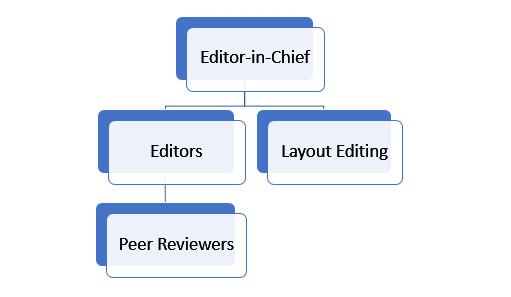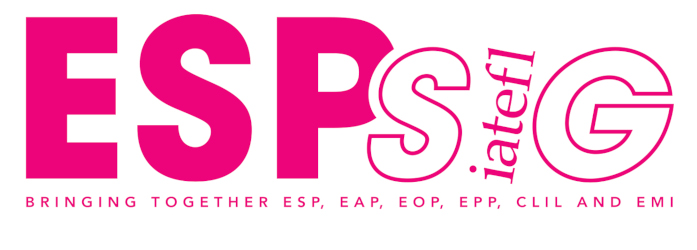Professional and Academic English is the double-blind peer-reviewed journal of the IATEFL ESPSIG and is published in line with the publishing policy of IATEFL.
Aims
Professional and Academic English aims to promote scholarship and practice in the broad area of English for Specific Purposes (ESP), including English for Occupational/Professional Purposes (EOP/EPP), English for Academic Purposes (EAP) and English as a Medium of Instruction (EMI) in all contexts where ESP is taught and used. Its objective is to provide a forum for the dissemination of research as well as practitioner views and discussions on topics relevant to the teaching, learning and use of English for specific communities.
Scope
Professional and Academic English currently publishes previously unpublished articles of 5,000 to 6,000 words and book reviews of 400-800 words.
The journal is available to IATEFL ESP SIG members as a membership benefit in both electronic and printed format. Non-members are able to purchase each issue of the journal for a small fee.
Frequency
Professional and Academic English is a biannual journal, published in June and December. The first call for papers for the June issue is circulated in October/November, and for the December issue in April/May, followed by two subsequent calls in each cycle, and with submission deadlines in March/April and September/October, respectively.
Special issues may be published outside the normal cycle.
Editorial Board

Editor-in-Chief
The editor-in-chief is a member of the IATEFL ESPSIG Committee. His/her key responsibility is to promote scholarship in ESP, encourage new and established authors to submit articles and set up, and oversee the work of, a reliable panel of editors and expert reviewers. The editor-in-chief is also responsible for offering feedback to editors and reviewers when required. He/she ensures that any feedback to authors is constructive. More specifically, the editor-in-chief is responsible for
- circulating the call for papers in line with the publishing timetable;
- corresponding with authors following submission;
- informing authors of the outcome of the review process;
- allocating work to the editors;
- ensuring that the timetable set in each cycle is adhered to;
- checking the final proofs and delivering them to the Head Office for printing;
- liaising with the ESP SIG Committee and the IATEFL Head Office (primarily, but not exclusively, with the Publications Committee);
- promoting the journal, including seeking contributions through organisational, academic and (personal) professional networks;
- recruiting editors and peer reviewers;
- handing over all journal documentation, including e-mails, databases, access details, etc. to the newly elected editor-in-chief and inducting him/her to the role.
The editor-in-chief also plans, initiates and leads a periodic review of the aims, scope and operation of the journal, which includes reviewing the work of editors and peer reviewers and making recommendations to the Committee for their continued engagement or termination.
The editor-in-chief is elected for three years. Upon satisfactory performance, his/her service may be extended to a further three years, at the end of which he/she must step down.
To ensure continuity, each newly elected editor-in-chief assists the outgoing editor-in-chief in the production of the current issue of the journal. Upon the publication of that issue, the incoming editor-in-chief assumes full responsibility for the journal, while the outgoing editor-in-chief takes up an advisory role for the duration of the next publication cycle (i.e. the production of the next issue), at the end of which his/her advisory role comes to an end. It is a tradition to hold a farewell ceremony for the outgoing editor-in-chief at the annual IATEFL conference.
Editors
Editors are not members of the IATEFL ESPSIG Committee. Although it is preferred that they be members of the ESPSIG or more broadly of IATEFL, this is not a requirement as long as their professional and experiential background is relevant to this role, and they agree to abide by the rules and regulations governing the ESPSIG and the publication of its journal.
Editors are engaged for a period of three years, which may be extended for a further three years upon satisfactory performance. Having served two terms, editors must step down.
Editors (articles/book reviews)
The key responsibility of editors is to allocate submissions to peer reviewers and copyedit content. Specifically, they are responsible for
- allocating submissions to peer reviewers and setting deadlines for the reviews;
- ensuring that peer reviewers return their reviews by the deadline;
- controlling the quality of the reviewer’s reports;
- making a recommendation to the editor-in-chief;
- assisting authors in revising their submissions, including developmental editing;
- proofreading the author’s final version;
- delivering the proofread final version to the editor-in-chief;
The editors periodically review the performance of the reviewers and make recommendations to the editor-in-chief for their continued engagement or termination.
Layout Editing
Layout editing may be provided by a publisher. In the absence of such a provision, a layout editor needs to be in place. He/she is responsible for the design and formatting of pages and other material for print and online use. Specifically, he/she
- designs the format of the journal in agreement with the editor-in-chief and editors;
- utilises layout software to assemble text and other content (photographs, graphs, charts, etc.) in an aesthetically pleasing and easy-to-read arrangement;
- liaises with authors to ensure that the final layout of their manuscripts corresponds to what they require;
- delivers the final proofs to the editor-in-chief.
After the layout editing of a journal issue is completed, the layout editor may be required to perform other editorial tasks such as copyediting content.
The responsibilities of the layout editor may include redesigning and reformatting current layout and style as required by the development of the journal.
Peer Reviewers
Peer reviewers are not members of the IATEFL ESPSIG Committee. Although it is preferred that they be members of the ESPSIG or more broadly of IATEFL, this is not a requirement as long as their expertise and professional background is relevant to this role, and they agree to abide by the rules and regulations governing the ESPSIG and the publication of its journal.
Peer reviewers are responsible for
- reading submissions allocated to them by an editor;
- commenting on
- the relevance of the submissions to the scope of the journal;
- the quality of the content and language of the submissions;
- writing a review of each allocated submission;
- making a recommendation as to the acceptance or rejection of each submission;
- delivering the reviews and recommendations to the editors within the set time frame;
- review submissions that required substantial revision, comment on the revised versions and make recommendations on whether they are to be accepted or rejected.
Peer reviewers are engaged for a period of three years, which may be extended for a further three years upon satisfactory performance. Having served two terms, peer reviewers must step down.
Peer review process
Upon submission, authors receive an acknowledgement of the receipt of their manuscript within a week.
The editor-in-chief reviews the manuscript to see if it fits the scope of the journal and meets the submission guidelines and editorial standards. Then, an editor sends a fully anonymised copy to two independent experts in the field for blind peer review. Reviewers normally return their reviews to the editor within four weeks. Based on the reviews, the editor makes a recommendation to the editor-in-chief, who considers the recommendation, makes a decision and informs the author. A paper may be accepted for publication without revision, with minor/major revisions, or may be rejected. The decision of the Editorial Board on the outcome of the review is final.
Once a paper has been accepted for publication, the editor liaises with the author to assist the revision if need be. Authors return their revised manuscripts to the editor, who verifies that the revisions have been made satisfactorily. If necessary, the manuscript may be returned to the author for further revision. In case of major revisions, the manuscript may be sent back to the peer reviewers. A third opinion may be sought if the reviewers are not able to reach a consensus on the quality of the manuscript.
The author’s final version is proofread by the editor and sent to the editor-in-chief, who arranges for the proof to be prepared. The proof is sent to the author for correction and is returned to the editor-in-chief by the deadline specified by the journal.
Publication ethics
The Editorial Board of Professional and Academic English aims to adhere to the Committee on Publication Ethics (COPE) Code of Conduct and Best Practice Guidelines for Journal Editors (Appendix 2), Ethical Guidelines for Peer Reviewers (Appendix 3) and Retraction Guidelines (Appendix 4).
Professional and Academic English strongly advises its authors to strictly abide by the COPE guidelines on good publishing practice (Appendix 4) in order to avoid rejection, withdrawal or retraction of their work.
Indexed/Abstracted
Professional and Academic English aims to achieve indexed status within the next three years.
Appendix 1
Submission Guidelines
- Professional and Academic English (P&AE) accepts previously unpublished work on topics of significance to its readers.
- Authors do not need to be IATEFL ESPSIG members.
- After submission to P&AE, authors are requested to refrain from submitting their papers to other journals until a publication decision is made.
- Only one submission per author, or joint authors, is accepted for each issue.
- Articles should be 5,000 to 6,000 words, excluding references, tables and appendices. Insights into teaching and classroom practice may be shorter than 5,000 words, but not longer than 6,000. Postgraduate students can submit studies of 2,500-3,000 words as well as full-length articles.
- Book reviews should be approximately 400-800 words, excluding references.
- Authors must state whether they are submitting an article, classroom report, a book review or postgraduate research.
- To facilitate the double-blind review that this journal is using, authors should include a separate cover page with the following information: title, author’s name/authors’ names, each author’s affiliation, each author’s full postal address, each author’s e-mail address, each author’s short biography of no more than 50 words. Joint authors should indicate who the corresponding author is.
- The main body of the paper should contain the following: title, abstract, the article, references, appendix/appendices (if any).
- In order to ensure anonymity during the reviewing process, the main body of the paper (including notes, footnotes, captions, references) should not contain any identifying information such as the authors’ names or affiliations. In case any such information is included, the submission will be returned to the author(s) for the removal of all identifying information.
- All submissions should be Word documents. Formatting: title – Calibri-Bold 16; section titles – Calibri-Bold 14; subsection titles – Calibri 13 bold italic; sub-subsection titles – Calibri 13 italic; body text – Calibri 12; line spacing – single. Sections must be numbered according to academic convention: 1 Section, 1.1 Subsection, 1.1.1 Sub-subsection, etc. Figures/tables/graphs/charts: centred, each type numbered consecutively, with the caption centred and placed underneath. Punctuation: no full stop after titles/subtitles/sub-subtitles; single quotation marks for direct quotations, double quotation marks for quotations within quotations. Footnotes can be used and should be numbered consecutively throughout the article.
- The formatting of references in the text and in the reference list should follow the guidelines stated in the Publication Manual of the American Psychological Association, 7th+ Edition.
- Images should be of a high resolution (at least 300 dpi).
- Manuscripts that may require editing to eliminate possible grammatical, spelling and punctuation errors in order to conform to correct scientific English will be subject to developmental editing.
- All submissions are to be sent by email attachment to [email protected], using the following file names:
articles: P&AE_article-cover_surname_initial(s) and P&AE_article_surname_initial(s);
book reviews: P&AE_review-cover_surname_initial(s) and P&AE_review_surname_initial(s);
classroom practice: P&AE_classroom-cover_surname_initial(s) and P&AE_classroom_surname_initial(s);
postgraduate research: P&AE_postgrad-cover_surname_initial(s) and P&AE_postgrad_surname_initial(s).
Appendix 2
COPE Code of Conduct and Best Practice Guidelines for Journal Editors
Appendix 3
COPE Ethical Guidelines for Peer Reviewers
Appendix 4
COPE Retraction Guidelines
